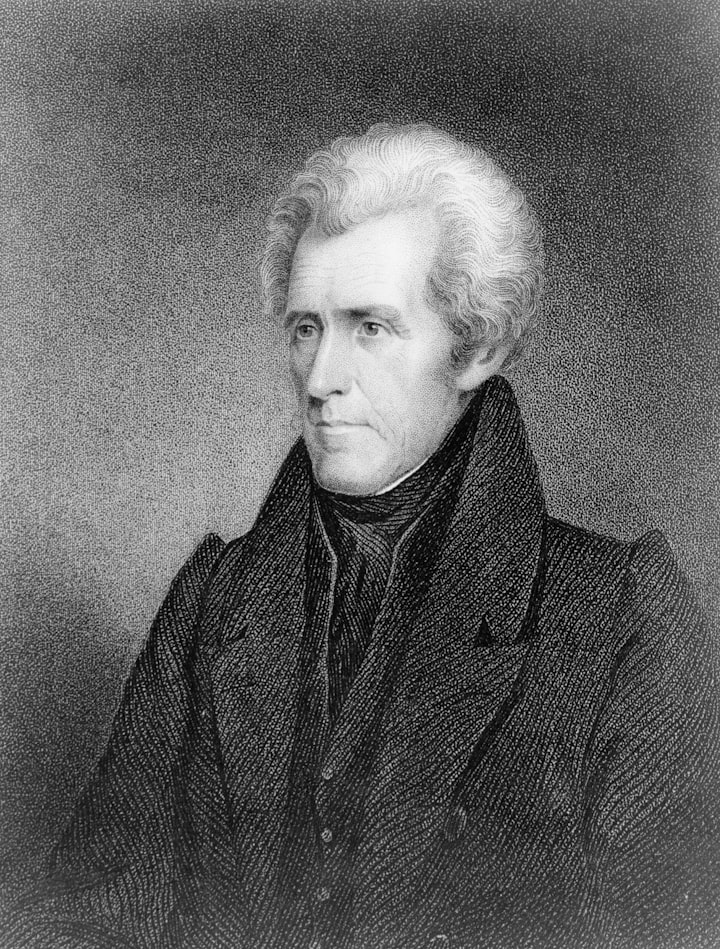Back to Basics: A Gleaning of Contemporary Native American Mental Health Issues
Using author Tommy Orange to posit that the ability to return to and combine certain elements of Native culture with contemporary ways of living can help remedy systemic problems facing Native American populations.

Savage warmongers or animal-loving pacifists? Uncivilized beasts or trainable inferiors? Early settlers of North America perhaps debated these questions amongst themselves when encountering the indigenous peoples of The New World. Regardless of the discussions that took place, one thing is certain: the decimation of Native American (NA) populations is a black mark forever ingrained in United States history.
The evolution of distinct native tribes was halted indefinitely, and the resulting abrupt disconnect from tradition and forceful assimilation into European-American culture was anything but flawless. It is only in the last five or six decades that some semblance of traditional culture has been allowed to flourish, at least as far as the U.S. government is concerned.
Author Tommy Orange addresses contemporary issues facing Native Americans in his novel There There. Orange presents to readers twelve unique points-of-view, all with different levels of connection to Native American culture, through which readers begin to glean what the Native American experience is like. Throughout the novel, Orange explores these characters whose personal journeys suggest that the ability to return to and combine certain elements of Native culture with contemporary ways of living can help remedy systemic problems facing Native American populations.

To understand how such issues can be remedied, one must first understand what the problems are and their evolution. NA people were ripped both from their lands and their cultures. Orange portrays the beginnings of what was to become a centuries-long genocide. In one anecdote presented by him, Orange writes, “anywhere from four to seven hundred Pequot gathered for their annual Green Corn Dance. Colonists surrounded their village, set it on fire, and shot any Pequot who tried to escape” (5).
Zooming out, he goes on to write that “[a]ll the way from the top of Canada, the top of Alaska, down to the bottom of South America, Indians were removed, then reduced to a feathered image” (5). Orange makes it clear throughout “Prologue” that European-Americans were intent on getting rid of NA societies: “Getting us to cities was supposed to be the final, necessary step in our assimilation, absorption, erasure, the completion of a five-hundred-year-old genocidal campaign” (8). Regardless of the methods used by colonists and their descendants, the reality is that NA culture was not to be tolerated, and those who chose not to assimilate were to be done away with.

Genocide, as a collective trauma, has ramifications not just for those who experience such a horror, but also for future generations. In “Native Elder and Youth Perspectives on Mental Well-Being, the Value of the Horse, and Navigating Two Worlds,” authors Mary J Isaacson et al. define “[h]istorical trauma [as] the ‘cumulative and collective emotional and psychological injury both over the life span and across generations, resulting from a cataclysmic history of genocide’” (267). This type of trauma, combined with “original trauma through social inequality, poverty, and discrimination” (Isaacson et al. 267), compounds to create emotional wounds so big that it would be nearly impossible for them not to cause outwardly reflected problems.
Orange also touches on this: “The wound that was made when white people came and took all they took has never healed. An unattended wound gets infected. Becomes a new kind of wound” (137). The fact that this notion is conveyed in the novel as well as scientific research speaks volumes to the magnitude of this trauma, and lends validity to the concept that colonization practices – in regard to settler and NA relations – from the seventeenth-century onward are the root of many problems facing NA populations today.

One of the most widely held stereotypes regarding Native Americans relates to their proclivity for alcoholism, but the truth is that – although alcoholism does affect natives more than European-Americans – it is anything but inherent, and in fact stems from European contact. In “Historical and Cultural Roots of Drinking Problems Among American Indians” – published in The American Journal of Public Health – authors John W. Frank et al. note that the “age-adjusted alcoholism mortality rate for Native Americans is approximately 6 times . . . the US population as a whole” (344). While alcohol kills significantly more NAs than Americans, the reason is not that NAs are genetically programmed to be susceptible to alcoholism. In “The Native American Healing Experience,” authors Don Coyhis and Richard Simonelli tee off their article – published in Substance Use & Misuse – with this: “…there is no scientific evidence whatsoever to support the notion that the indigenous people of North America are biologically and racially prone to alcoholism” (1927).
Before Europeans arrived, there was virtually no alcohol in the present-day U.S., and “alcohol’s effects were largely unknown through much of North America” (Frank et al. 345). Not only was alcohol not present in North America prior to colonization, but the colonists’ behavior in this New World, where it was an anything-goes type of lifestyle was modeled by NAs after the Europeans’ and the NAs “developed significant risks for socially and physically harmful alcohol use” (345). NAs were new to alcohol, and they were new to drinking. After initial contact with alcohol, “there was a progressive development…of high-dose, prolonged collective binge drinking” (346). NAs did not know how to drink, and their societies had no norms or customs regarding the consumption of alcohol. NAs based their drinking off of Wild-West type drinking, became addicted, and the cycle has ensued since. This is an oversimplification, of course, but comprehensible, nonetheless. This supports some claims in There There, when Orange’s character Harvey – a recovering NA alcoholic with decades of sobriety – states, “‘It’s not the alcohol. There’s not some special relationship between Indians and alcohol. It’s just what’s cheap, available, legal’” (112). Building on the fact that NAs disproportionately face poverty, as well as compounded trauma, it makes sense that the cheapest form of something with which to numb emotions would be the go-to.
Orange reflects this in the fact that he has multiple characters who presently do, or have in the past, struggled with alcohol. The aforementioned character of Harvey is one; he has been sober “‘[s]ince 1982’” (114). When readers first meet Jacquie Red Feather – a substance abuse counselor at a conference for “Substance Abuse and Mental Health Services Administration,” ironically – is just “ten days sober” (98). Thomas Frank, an NA powwow drummer, is also an alcoholic, who started to drink as a young adult, but continued “drink[ing] every night” (217) at first to treat his eczema, but – as with most addictions – it developed into a vicious, near-impossible to stop cycle. One of the more tragic displays of alcoholism in There There is the character Tony Loneman. Loneman suffers from fetal alcohol syndrome, or “The Drome,” as he refers to it (16). Becauase of this he suffers from life-long ridicule, gawking, and a remarkably low sense of self-esteem.

Now that it has been established that NA populations are overrepresented in alcoholism sufferers, remedies can be addressed, and one of the most strongly-argued for – by NAs themselves – is traditional NA culture. Coyhis and Simonelli explore the NA “Wellbriety movement” (1927), which seeks to combat addiction by using “the best attributes of traditional Native cultures” (1928) in combination with modern-day ways of living. The movement also emphasizes the importance of addressing “the deep wounds of intergenerational trauma carried by almost all Indian people” (1928) as a factor in recovery from addiction.
This ties back to Isaacson et al.’s findings which show that said “chronic trauma” has led to NAs – NA youth, in particular – having “a greater prevalence of…substance use disorders” (267-8), and that helping NA youth walk the line between contemporary living and successfully “maintaining one’s cultural identity” (269) is vital to combatting the problems generated by intergenerational trauma.
For example, the Wellbriety movement has combined the less-than-a-century-old Alcoholics Anonymous’ twelve-step program with The Medicine Wheel – “a concept from the plains tribes of North America” (Coyhis and Simonelli 1932) – in which some traditional values are extracted from The Medicine Wheel and paired with each of the twelve steps. Keeping with traditional NA practices, the twelve steps are represented as a circle, rather than in a linear fashion, and each is paired with a cardinal direction and one principle which “emphasizes the interconnectedness of the 12 Steps” (1934).
It can be inferred that Harvey, being heavily involved in NA powwows as well as Alcoholics Anonymous, benefits from the synergistic effects of the two. Jacquie, on the other hand, appears to be far less involved in the modern-day powwow NA culture, and is subsequently far less successful at maintaining sobriety than Harvey.

Another, perhaps more pressing, issue facing the NA community is teen suicide, which arguably stems from both chronic trauma as well as the inability to juggle two cultures. Issacson et al. found that NA youth commit suicide at more than twice the rate of the national average and “experience significant mental health challenges” (268). As previously mentioned, NAs’ intergenerational wounds are becoming infected, and the infection is beginning to seep into the bloodstream. Not only is this reflected in real-life statistics, but also in There There. While at the conference for mental health and substance-use professionals, the speaker – a Native himself – notes that he has experienced “fifteen relatives commit suicide…not counting [his] brother” (104). He also notes that a tribe in South Dakota experienced “seventeen suicides” in “just eight months” (104). These are staggering numbers, indeed, but there is some underlying issue that is not being addressed.
Perhaps it is not able to be seen, or maybe it is being ignored. It could be an identity crisis which drives teens – unable to find a place in the world wherein they fit – to kill themselves. The lack of ability to find a connection with any group is reflected throughout the novel. Jacquie Red Feather’s second daughter committed suicide. Orvil Red Feather, who is kept from his NA culture by Opal, yearns for such a connection, and does not find it until he is in a locker room at the powwow with a group of NA men. Edwin also searches for connections to his NA roots, studying NA literature in college, obtaining a master’s degree, which does not sate that desire. He then reaches out to his father, Harvey, and sets up a meeting at the powwow to meet; it is there that Edwin will perhaps find what he is looking for. After all, powwows were made for NAs to gather together “because there aren’t very many places where [NAs] all get to be together, where [they] get to see and hear [one another]” (Orange 135). Isaacson et al. outline that – per both NA elders and youths – “knowing and participating in traditional cultural activities…[is a way of] decreasing adolescent risk behaviors” that may lead to substance abuse, mental health issues, or worse (290). Their findings also indiciated that exploration of the navigation of two worlds – the contemporary and NA – was key to finding a remedy to the problems created by the intergenerational trauma which stems from the genocidal campaign of the European settlers, and later European-Americans.

If a sapling is ripped from the ground and disconnected from its roots, it will die, just like NA cultures, as they were pre-contact, have died. To repair such an uprooting, one cannot simply tape new roots onto the sapling and pray it grows. The sapling must be rerooted, in the ground, but the roots will never be the same. The new ground in which they are planted will provide a different composition of nutrients, just like the contemporary NA culture is drawing from the same base, but with very different influences.
While this analogy may seem far-fetched, it makes sense, because just like a sapling will grow into a tree with ever-increasing branches and offshoots, so too will a culture branch out and morph over the course of time, if it is allowed to.
By re-rooting the sapling that is NA culture and allowing it to grow into and evolve into whatever time will guide it to be, damage is surely – though slowly – bound to be repaired.
In There There, Orange confronts this head-on and presents characters struggling to connect with their NA roots in a way that meshes with modern American society. As can be seen, the characters, although they struggle, seem to be finding a new culture, a hybrid one. This hybrid culture is galvanized at the end of the novel, when a uniquely Native American practice – a powwow – collides with a uniquely modern-American occurrence – a mass shooting. How’s that for hybridization?







Comments
There are no comments for this story
Be the first to respond and start the conversation.